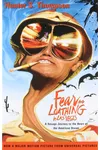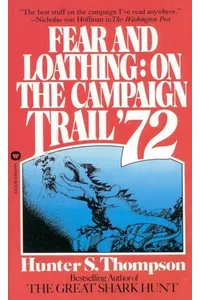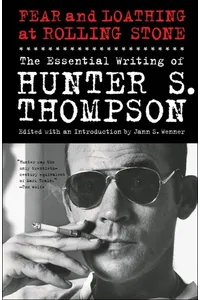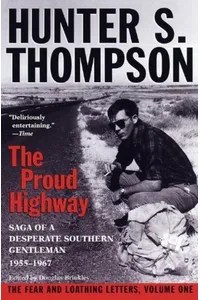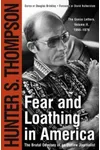Buckle up for a wild ride with Hunter S. Thompson’s Fear & Loathing series, where gonzo journalism meets the chaotic heart of the American Dream! This electrifying collection of five books, drenched in drugs, wit, and rebellion, redefined storytelling with its raw, immersive style. Thompson’s fearless lens on society’s underbelly makes Fear & Loathing a countercultural masterpiece that still burns bright.
From the neon haze of Las Vegas to the gritty campaign trails, Thompson’s series captures the absurdity and disillusionment of America in the late 20th century. Whether you’re a fan of biting satire or just love a story that breaks all the rules, Fear & Loathing delivers a punch you won’t forget.
How Fear & Loathing Began
Hunter S. Thompson, a renegade journalist with a knack for trouble, birthed the Fear & Loathing series through his groundbreaking gonzo style—where the writer dives headfirst into the story, no objectivity required. It all kicked off in 1970 with his article 'The Kentucky Derby Is Decadent and Depraved,' which introduced his chaotic, participatory approach. The term 'gonzo' was coined by friend Bill Cardoso, and Thompson ran with it, cementing his legacy with Fear and Loathing in Las Vegas, serialized in Rolling Stone in 1971.
Inspired by the collapse of 1960s idealism, Thompson used his drug-fueled adventures to dissect America’s excesses. His partnership with illustrator Ralph Steadman, whose surreal art amplified the madness, turned the series into a cultural phenomenon, blending fact, fiction, and unapologetic attitude.
The Heart of Fear & Loathing
The series’ crown jewel, Fear and Loathing in Las Vegas (1972), follows journalist Raoul Duke and his attorney Dr. Gonzo as they tear through Vegas in a drug-soaked quest for the American Dream. What starts as a gig covering a motorcycle race spirals into a surreal critique of hedonism and societal decay, with prose as frenzied as the duo’s bender.
Fear and Loathing on the Campaign Trail ’72 (1973) shifts gears, chronicling Thompson’s coverage of the 1972 presidential election. His gonzo lens exposes the absurdity of political machinery, blending sharp analysis with hallucinatory rants. Hell’s Angels: The Strange and Terrible Saga (1966), while predating the series’ name, is often included for its immersive dive into the outlaw motorcycle gang, laying the groundwork for Thompson’s style. The Great Shark Hunt (1979) and Songs of the Doomed (1990) round out the series, compiling essays and reflections that cement Thompson’s voice as a cultural barometer.
Themes of alienation, excess, and the death of idealism run deep, set against backdrops like Vegas’s glitzy casinos and America’s political underbelly. Thompson’s style—part poetry, part rant—mixes dark humor, vivid imagery, and a disdain for authority, making every page a rebellion against conventional storytelling.
Why Fear & Loathing Resonates
Fear & Loathing didn’t just break the mold—it set it on fire. Thompson’s gonzo journalism inspired generations of writers, from Matt Taibbi to modern bloggers, to embrace subjectivity and raw honesty. The series’ critique of American excess remains timeless, resonating with readers who see parallels in today’s polarized world. Its 1998 film adaptation, starring Johnny Depp, brought Thompson’s vision to new audiences, solidifying its pop culture status.
Beyond its literary impact, Fear & Loathing captures the thrill of living on the edge. Fans cherish its unfiltered voice, which dares to question power and revel in the absurd. Thompson’s legacy as a countercultural icon endures, making the series a must-read for anyone craving truth with a side of chaos.
- First published: 1966 (Hell’s Angels)
- Number of books: 5
- Key adaptation: Fear and Loathing in Las Vegas (1998 film)
Grab Fear and Loathing in Las Vegas and dive into Thompson’s gonzo world—where the American Dream gets a reality check and every page crackles with rebellion!
